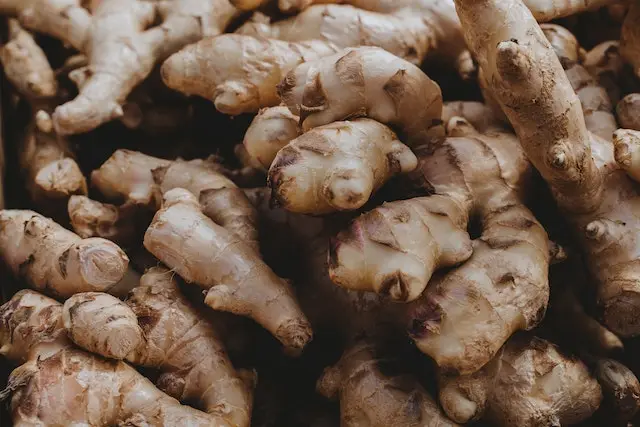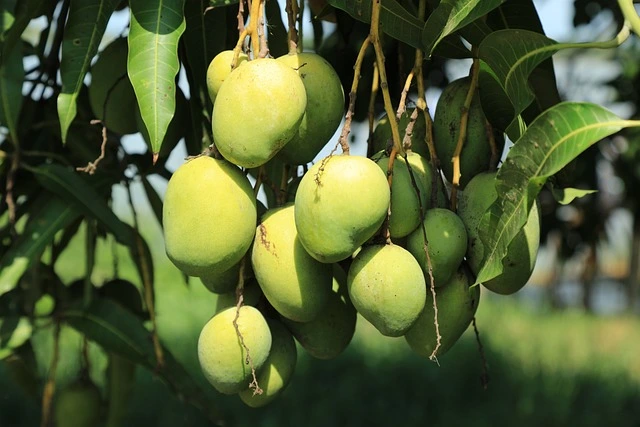As a high-value cash crop, ginger farming contributes significantly to the livelihoods of farmers & economies worldwide. The robust demand of ginger crop in the culinary, medicinal, and cosmetic industries makes it a lucrative venture for agricultural enthusiasts.
Moreover, the ability of ginger crop to adapt to diverse climates & its low maintenance requirements make it an ideal crop for both seasoned and new farmers, fortifying its position as a key player in global agricultural markets. Farmers can sell their harvested ginger in wholesale markets, local retail markets, farmers’ markets, or roadside stands & can even sell to food processing companies.
If you want to cultivate it is a cash crop, then you can even unleash the export potential of ginger crop. But before that, let’s get started with the farming techniques of ginger crop.
Table of Contents
Ginger Farming Guide

Climate For Ginger Crop
Commercial production of ginger requires tropical or temperate moist climate. You can cultivate ginger up to 1500 meters above sea level. Well distributed rainfall (1500 to 3000 mm) for 8-10 months during plant growth & dry season before harvest is good for high yield. The optimum temperature for ginger crop is 19-28o centigrade.
Ginger crop can get scorched when the temperature is more than 32o degree centigrade and dormancy occurs due to low temperature. Ginger plants grow well in light shady places. Hence it is cultivated as an intercrop. You can plant them with other cash crops or maize.
Soil For Ginger Crop
You can cultivate ginger in wide range of soils, but loamy, friable, at least 30 cm deep soil with good drainage and fertility is the best. This crop is sensitive to water logging, frost and saline soil and tolerant to wind and drought. Ideal pH range of the soil for ginger cultivation is between 6.0 to 6.5.
Field Preparation
Choose a well-drained site with loamy or sandy-loam soil that has good water-holding capacity. Remove weeds, rocks, debris, or previous crop residues. If possible get soil tested before planting or sowing ginger. Plow the field to a depth of about 20-25 cm to loosen the soil. Follow up with tilling or harrowing to create a fine tilth, which helps in better root penetration & seedling emergence.
Create ridges and furrows to facilitate proper drainage and prevent waterlogging during the growing season.
Sowing Time, Method & Treatment
You can sow ginger in the month of April to May. It is necessary to have sufficient moisture in the field at the time of sowing. Disease-free rhizome parts called bits should be selected for sowing. bits 2-5 cm Long, weighing 15-20 grams and should have at least one live bud.
Seed Rate Of Ginger: 15-20 quintal of ginger rhizome is required per hectare.
Treatment Of Rhizome: Before sowing, the rhizomes should be treated in a solution of 2 grams of carbendazim or 3 grams of copper oxychloride per liter of water for 15-20 minutes and then dried in a shady place and sown.
Sowing Distance & Method: Sow ginger in furrows at line to line distance of 30 to 40 centimeters, plant to plant distance of 30 centimeters & at the depth of 5 to 10 centimeters. After covering the rhizomes with soil at the time of sowing, it is necessary to cover them with mulch. The thickness of the mulch should be 5 to 7 centimeter. It should be so that sunlight does not reach the surface of the soil and moisture is conserved.
Fertilizers For Ginger Crop
Three weeks before sowing, 25-30 tonnes of well decomposed cow dung manure should be mixed in the field. In addition to this, 100-120 Kilograms Nitrogen, 75-80 Kilograms Phosphorus and 100-120 Kilograms Potash is required per hectare. Half quantity of Nitrogen and full quantity of Phosphorous and Potassic fertilizers should be mixed in the field at the time of last ploughing. Apply remaining half dose of Nitrogen as top dressing in two equal splits at 45 and 90 days after sowing.
Irrigation For Ginger Crop
Germination can be quick by irrigating immediately after sowing in low rainfall areas. In the dry season (mid-September to mid-November), irrigation is required at an interval of 15 days for higher yield & better quality of rhizomes. In such soil, in which the water holding capacity is less, frequent irrigation is required.
Due to light irrigation 5-6 days before harvesting, the rhizomes emerge from the soil quickly and break less.
Mulching & Shade For Ginger Crop
Ginger cultivation in 25-50 percent partial shade gives an increase in quality and yield as compared to open environment. Cultivation with one line each of ginger and maize gives good yield of both ginger and maize. Organic mulching is very beneficial in ginger cultivation. Leaves of trees, dry leaves of sugarcane, locally available leaves and weeds, paddy straw etc. can be used as mulch.
Mulching increases germination, water percolates well into the soil, increases soil organic matter, maintains soil moisture, prevents weeds from growing and reduces soil erosion due to heavy rains. Apart from this, it increases the activity of micro-organisms and the fertility of the land.
Weed Management
Weeds can be suppressed by laying mulch. Normally two to three weeding should be done to the ginger crop. First weeding should be done after 30 days of sowing, second and third weeding should be done at an interval of 45 and 60 days. After this, soil should be put on the furrows.
Pests & Diseases Management
| Pests & Diseases | Symptoms | Control Methods |
|---|---|---|
| Rhizome Rot Disease | The upper part of the diseased leaves turns yellow and in some time the whole leaf turns yellow and bends. The initial infection of this disease occurs by using diseased rhizomes as seeds and planting healthy rhizomes in diseased areas. | While sowing the rhizomes, make a solution of Macozeb Ridomil M.Z-72-2.5 grams or 3 grams of copper oxychloride per liter of water and after treating it for 5-10 minutes, dry it well in the shade. Spray fungicide on standing crop 4 to 5 times at an interval of 10 to 15 days. |
| Bacterial Wilt | It can happen due to waterlogging in the farm. | Drench standing crop with Copper oxychloride to control this disease. |
| Dry Wilt Of Rhizome | The leaves of diseased plants turn yellow. Later the whole plant appears scorched. The inner part of diseased rhizome turns black. The diseased tissues turn into black powder and the rhizome shrinks and dries up in severe disease. | By making a solution of Benomyl or Carbendazim 2 grams per liter of water, the rhizomes should be treated by immersing them in it for at least 20-30 minutes. Treated rhizomes should be dried in shade and used for sowing. |
| Leaf Spot | In the beginning of this disease, small yellow oval or elongated shaped spots are formed on the leaves. Later the spots increase in size and turn white. Their edge is dark brown. In the intensity of the disease, the leaves become yellow and discoloured, which appears scorched from a distance. | To prevent this disease, spray Indofil M-45 @ 3 grams per liter of water or Carbendazim @ 2 grams per liter of water. |
| Stem Borer | This insect lays eggs in the growing bud and petiole. After emerging from the egg, its caterpillar eats the inner tissue of the main stem, due to which the stem dries up. Later it also affects the rhizomes. | Make a solution of Malathion 2 ml per liter of water and spray at an interval of 15 days. |
| Rhizome Scale | This pest attacks ginger during storage. It invades the tissues and eats the fluid of the rhizomes. Due to which the rhizomes become weak and eventually dry up and die. | Treat rhizomes with Quinalphos 2 ml mixed in a liter of water for 5 minutes. |
Harvesting & Yield Of Ginger
The soft rhizomes which are used for making green ginger, pickle, marmalade, candy, soft drink etc. are harvested five months after sowing.
The criteria for crop maturity for dry ginger are curling, yellowing and cracking of leaves, as well as drying and falling of stems. This period comes 8-9 months after sowing and the rhizomes grown at this time are more fibrous and have a pungent taste. Normally the yield of ginger comes to 12-15 tonnes per hectare.




